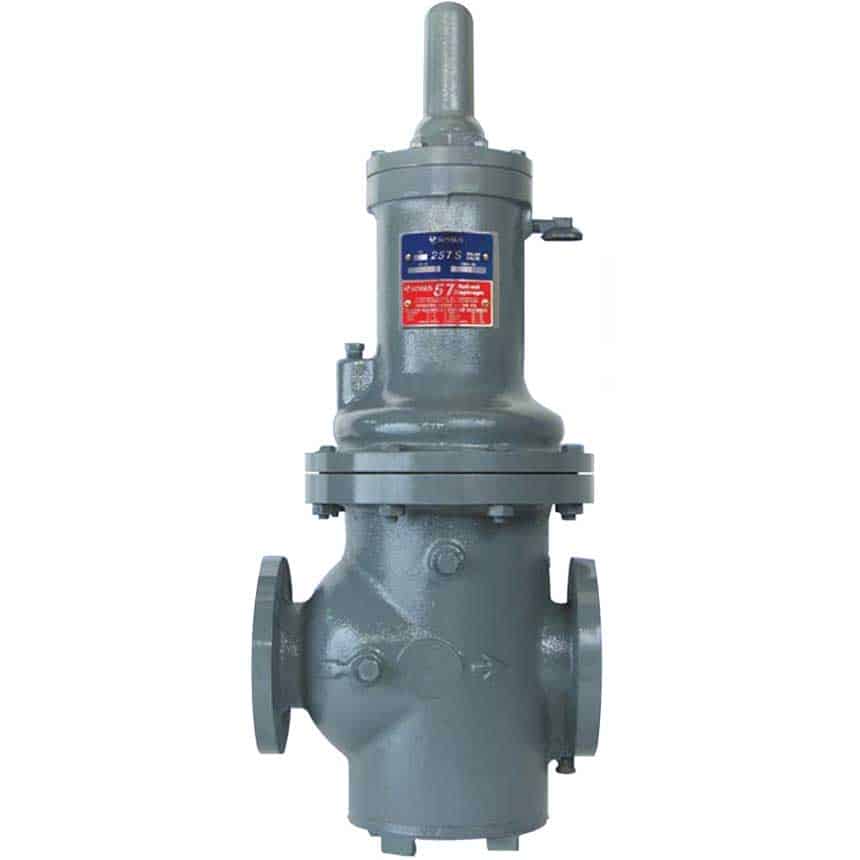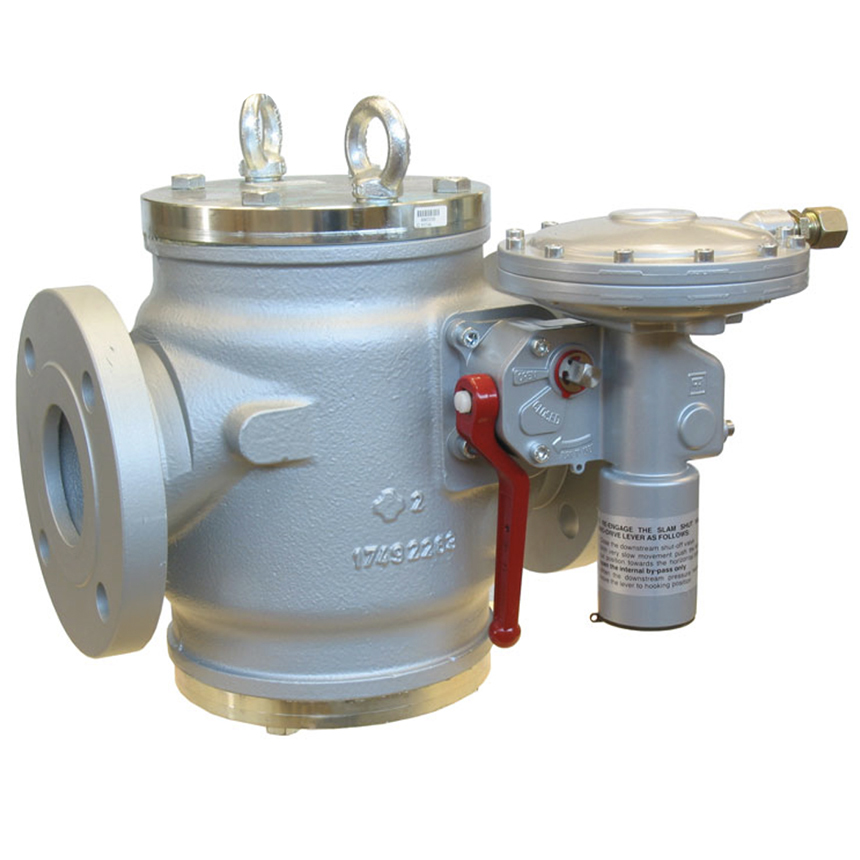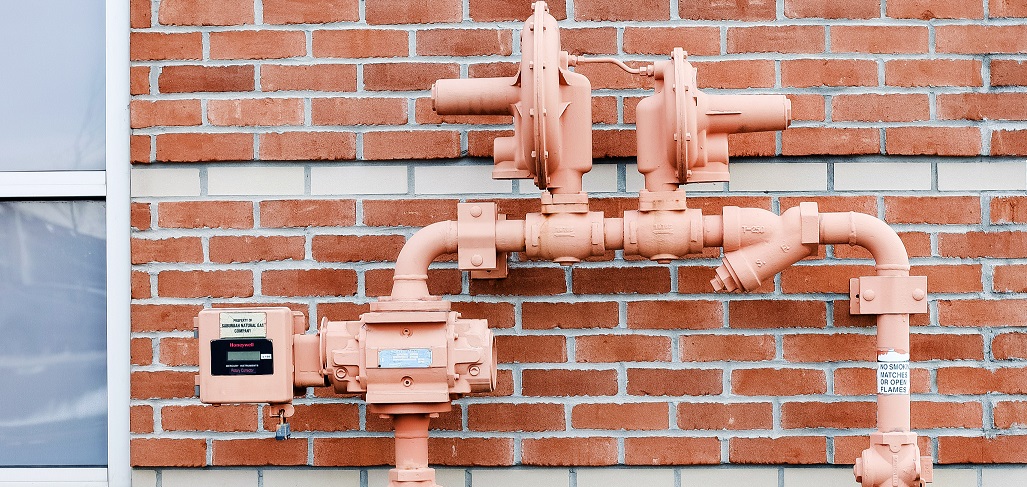Feeling the Pressure
A comparison of three overpressure protection options
Written by Katie Flowers
Introduction
Natural gas is the backbone of America’s energy infrastructure. Ensuring natural gas is used safely and its networks are secure is of the utmost importance. Protecting customers, employees, and equipment is the primary mission of American natural gas utilities’ operations. This is accomplished with thorough safety procedures, routine maintenance and monitoring, and most importantly reliable equipment.
If everything is not up to par with pressure regulation, a distribution system can face dangerous situations, such as over-pressurization. An overpressure event happens when a gas regulator fails, and highly pressurized gas is sent downstream to more vulnerable equipment and infrastructure with lower pressure ratings. Without a pressure regulator to properly control the system’s pressure, the system will become overwhelmed and be unable to handle the sudden increase in pressure if there isn’t something to stop it. When an over-pressurization event occurs, it can lead to further incidents like fires or explosions, which in turn can lead to death, injury, and destruction of property.
One of the best ways to improve safety and prevent dangerous events in a utility’s infrastructure is to implement methods of overpressure protection. Overpressure protection is all about redundancy, because having a redundant device prevents the system from exceeding the maximum allowable operating pressure (MAOP) even if the primary device were to fail. Not only is it forward thinking to add extra layers of security, but it’s also mandated. Code requirements and nationwide laws call for overpressure protection methods to be added to gas distribution systems, but they generally leave it up to the operator to determine what method is best.
The Big Deal About Overpressure Protection
An example of what can happen if there aren’t solid overpressure protection methods in place are the events that occurred in Merrimack Valley in 2018. The communities in this area were being supplied by a low-pressure distribution system. A low-pressure system, according to the Federal Register, is when “the natural gas in a distribution pipeline flows predominantly at the same pressure as the pressure contained within the customer's service line piping… Since there are no regulators at the customer meter set in a low-pressure system, an overpressure condition occurring on the distribution system can affect all customers served by the system in the event that the regulator(s) that controls the pressure for the system fails.” Without a backup system or even regulators at customers’ homes in some cases like Merrimack Valley, there was nothing to regulate the flow of gas and prevent the wreckage that occurred.
After this incident, overpressure protection was in the spotlight and lawmakers wanted to prevent similar events from occurring again. In December 2020, pipeline safety reauthorization legislation titled “Protecting Our Infrastructure of Pipelines and Enhancing Safety of 2020”, also known as the PIPES Act of 2020, was signed into law. The PIPES Act identifies areas where Congress believes additional oversight, research, or regulations may be needed. Namely, it requires utilities to do the following:
• Assess the risk of an overpressure event at their district regulator stations.
• Monitor the system pressure in low-pressure distribution systems.
• Ensure the regulator station has either secondary, backup pressure-relieving, or overpressure protection safety technology, such as a relief valve or automatic shutoff valve, or other pressure-limiting devices.
It’s important to be aware of any potential issues within the system. The first point requires utilities to directly survey their regulation infrastructure and address any problematic findings. Many utilities are choosing to tackle the second point by using remote electronic devices to monitor pressure. Using something such as an AMI device allows utilities to keep a constant eye on their systems. When it comes to the third point of implementing methods of overpressure protection, there are many options available to meet these criteria, and these options are the focus of this paper. The three most common methods used to provide overpressure protection involve adding pressure relief valves, slam shut valves, and/or monitor and control configurations. How these solutions can be added to a system can depend on the application and preferences of each utility.
Pressure Relief Valves
 One of the traditional methods of overpressure protection that can be integrated into natural gas infrastructure is a pressure relief valve. These valves are suitable for pressure relief within a utility’s infrastructure. While pressure relief valves can be applied as a standalone piece of equipment, some regulator manufactures offer models with an integrated internal relief valve (IRV) built in. Regulators with an IRV are a great option for low-capacity end user applications, but for district regulator stations it’s recommended to use a separate pressure relief valve as they can handle the large gas flow seen at these stations.
One of the traditional methods of overpressure protection that can be integrated into natural gas infrastructure is a pressure relief valve. These valves are suitable for pressure relief within a utility’s infrastructure. While pressure relief valves can be applied as a standalone piece of equipment, some regulator manufactures offer models with an integrated internal relief valve (IRV) built in. Regulators with an IRV are a great option for low-capacity end user applications, but for district regulator stations it’s recommended to use a separate pressure relief valve as they can handle the large gas flow seen at these stations.
A relief valve is a mechanism that senses the system’s downstream pressure and responds if the pressure exceeds the setpoint of the device. It remedies the sudden increase in pressure by venting excess gas to the atmosphere. However, because they do vent excess gas into the atmosphere, it is not recommended to use them in densely populated areas. It can create potentially hazardous situations and exposure for the people nearby as natural gas is released into the atmosphere when the valve is activated. Since natural gas is mainly comprised of methane, the federal government has been cracking down on methane emissions from the natural gas industry. It’s an important factor to consider when deciding what version of overpressure protection is best for your system.
Slam Shut Valves
 Another type of valve that can be used for overpressure protection is a slam shut valve. A slam shut valve works by quickly intercepting gas flow when the pressure it’s monitoring exceeds a pre-set limit due to an issue in the system. Depending on the model, the slam shut valve can sense pressure either internally or externally. The bottom line is if the slam shut valve senses that the pressure exceeds its set point, it will quickly shut down the flow of gas to prevent the system from being overwhelmed.
Another type of valve that can be used for overpressure protection is a slam shut valve. A slam shut valve works by quickly intercepting gas flow when the pressure it’s monitoring exceeds a pre-set limit due to an issue in the system. Depending on the model, the slam shut valve can sense pressure either internally or externally. The bottom line is if the slam shut valve senses that the pressure exceeds its set point, it will quickly shut down the flow of gas to prevent the system from being overwhelmed.
On one hand, a slam shut valve is a great last line of defense by stopping the flow of gas quickly before it can reach the end destination. Having no gas in the line after the valve can help prevent safety hazards such as explosions and leaks. Since slam shut valves do not vent to atmosphere, they can be a good option for utilities looking to reduce methane and gas emissions.
The customers on the other side of the slam shut valve face a major issue if it’s deployed in an overpressure event – their gas service will be cut off. The homes and businesses that depend on natural gas for production, cooking, hot water, and heating are out of service until the utility can address the issue, ensure the system is safe, and turn the gas back on. Slam shut valves require utilities to manually reset them, so the issue needs to be addressed quickly. Cutting off access to gas in the winter months can lead to uncomfortable and dangerous conditions and is something that should be considered when selecting an overpressure protection device.
Monitor & Control Configuration
![]()
As the saying goes, two is better than one. A monitor and control configuration, which can also be known as a worker-monitor, consists of two gas regulators that are installed in series. The downstream control line of each regulator is connected to the outlet piping downstream of the control at the same location. Typically, two of the same regulator models are used, but you may be able to use dissimilar regulators, depending on the application and pressure requirements.
The control is the regulator that is fully functional, in other words doing all the work, and is set at the required outlet pressure. The monitor regulator’s role is to be a redundant option if the control were to fail. If the control does fail, the monitor takes over to maintain downstream pressure without interrupting gas flow. The monitor is set at a slightly higher pressure than the control for a few reasons. First, the two would compete with each other if they were set too closely. Second, the higher set point allows the monitor to remain in the fully open position and not restrict gas flow through the regulators.
The monitor or control can be in either position in series and the positioning of the monitor depends largely based on a utility’s preference. Positioning can be dependent on the pressures in the system and the types of regulation equipment used. There are many great advantages of placing the monitor in the upstream position. One benefit is that the temperature of the gas flowing through the system is relatively higher. This helps reduce the chance of problems from freezing and keeps your system running smoothly. Secondly, the greater density of high-pressure gas minimizes pressure losses across the monitor. Now, what would it look like if the control regulator is placed upstream instead? First, if the control regulator were to fail, the sudden pressure surge on the monitor would be less and easier to handle than if it were placed first. Having the control upstream also helps protect the monitor from damage by adverse weather or events, or having a foreign object lodged in the valve. With the control upstream, the pressure chart would be able to disclose that something was trapped in the valve. Both of these benefits allow the monitor regulator to safely do its job is the control were to fail.
Monitor and control configurations are a tried-and-true staple in the natural gas industry. Having two regulators working together provides greater stability and reliability within a utility’s infrastructure. It’s also a cost-effective option. Having a monitor regulator as a part of your system not only provides an extra layer of safety, but also improves the functionality of the system. It helps keep the system online and operating if over-pressurization strikes.
Better Together
As we’ve discussed, having a backup plan in case of an overpressure event is a smart idea. But now, having two forms of overpressure protection may be required in the future for district regulator stations and low-pressure systems. Whether it’s pressure relief valves, slam shut valves, or monitor and control configurations, these methods can be mixed and matched to create several different options that will satisfy the requirements set out in the PIPES Act of 2020.
The PIPES Act notes the following :
• “The gas pressure of a low-pressure distribution system is monitored, particularly at or near the location of critical pressure-control equipment…”
• “The regulator station has secondary or backup pressure-relieving or overpressure-protection safety technology, such as a relief valve or automatic shutoff valve, or other pressure-limiting devices appropriate for the configuration and siting of the station and, in the case of a regulator station that employs the primary and monitor regulator design, the operator shall eliminate the common mode of failure or provide backup protection capable of either shutting the flow of gas, relieving gas to the atmosphere to fully protect the distribution system from over-pressurization events, or there must be technology in place to eliminate a common mode of failure…”
What the utility chooses is dependent on the application and the utility’s preference. One possible option is adding either a slam shut valve or a pressure relief valve to a monitor and control configuration. Either valve would be a suitable addition to an existing regulator station to provide additional overpressure protection. Sometimes the regulators can already have an internal relief valve or an integrated slam shut valve, which can work well for low-capacity applications. However, these valves are most often added to district regulator stations as a standalone component. Another option for a low-capacity application would be to add both types of valves to a setting with just a single regulator.
Conclusion
While the PIPES Act of 2020 is intentionally vague and PHMSA still needs to interpret this legislation and write prescriptive regulations from it, this Act will introduce many changes in the natural gas industry. Many of the moves were necessary to prevent an event like what happened in Merrimack Valley from happening again. The goal of overpressure protection is to protect natural gas systems against the failure of their regulators and ultimately to keep people safe. The good news is that there are several options available to meet the overpressure protection requirements.
Any combination of pressure relief valves, slam shut valves, and monitor and control configurations will keep your system sufficiently protected. How your utility chooses to implement overpressure protection depends on which methods are compatible with your system and district regulator stations, as well as the utility’s comfort level with the products. All three methods of overpressure protection present their own benefits, while some have certain drawbacks. Pressure relief valves keep gas flowing but require close monitoring to ensure the overpressure events are addressed quickly to prevent excessive methane emissions. Slam shut valves cut off the gas supply to customers at the end of the line. Depending on the weather conditions and how long it takes utilities to get the overpressure event under control, it can create rough situations for those who depend on natural gas for cooking and heating. With a monitor and control configuration, there’s always a regulator there to regulate the pipeline’s pressure.
No two applications are exactly the same, and the several options available allow utilities to implement two methods of overpressure protection where required as they see fit. Mix and match your way: whether it’s combining both valve types or adding a slam shut to a monitor and control. Overpressure protection provides your distribution system with enhanced security so you can have peace of mind it’ll be able to function even if a regulator fails.
